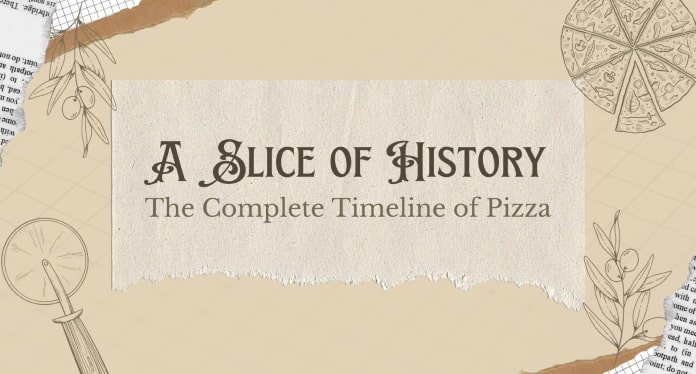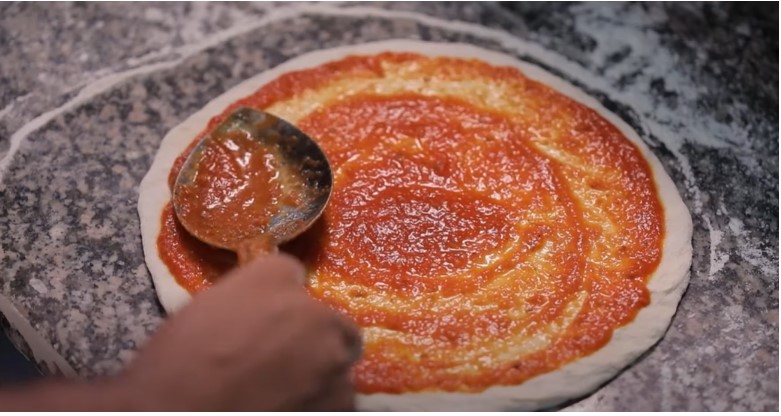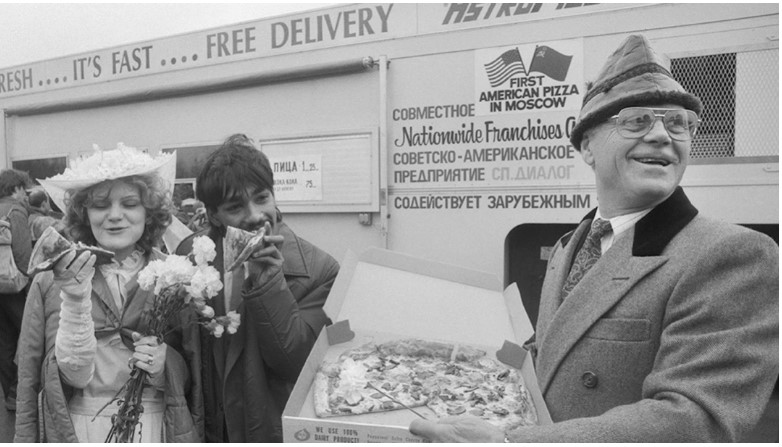The History of Pizza (5th Century BCE to Modern Pizzas)

Pizza has to be one of the most loved foods universally. As diverse as the dish itself, its history spans centuries and continents. Starting as flatbreads in Greece and evolving in Naples as the dish we recognize today, pizza has undergone significant transformations.
This blog explores how a simple combination of dough, cheese, and toppings grew from a regional specialty to a global phenomenon, adapting to different cultures and tastes along the way.
Ancient Beginning of Pizzas in Greece
While pizza is often associated with Italy, its roots trace back to ancient Greece. The Greeks baked flatbreads called "plakous, topped with ingredients like cheese, garlic, onions, and herbs. These early creations, documented as far back as the 5th century BCE, were baked on hot stones or in clay ovens. Similarly, Romans enjoyed flatbreads with toppings, showing that the idea of pizza-like dishes was widespread in ancient times.

Even earlier, civilizations like the Egyptians and Babylonians had their own versions of flatbreads with flavored toppings. However, these early forms of pizza lacked the tomatoes and mozzarella we now associate with the dish.
Pizza Was a Practical Meal in the Middle Ages
During the Middle Ages, pizza began evolving into a practical dish for the poor in Naples, Italy. Simple flatbread dough served as an edible plate for ingredients like olive oil, cheese, herbs, and small fish. It was cheap, easy to make, and versatile, which made it a staple food among the working class.

Despite its modest beginnings, pizza started breaking down social barriers. Upper-class banquets began featuring it as an exotic novelty, highlighting its potential to transcend its humble origins. The simplicity and adaptability of pizza helped it endure through the centuries, setting the stage for its rise to fame.
Explore different types of pizza crusts.
Tomatoes X Pizzas: A Game Changing Duo
In the 17th century, a revolutionary ingredient changed the gametomatoes. Brought from the New World, tomatoes were initially feared as poisonous in Europe because of their vivid red color. Luckily, someone defied this myth, and tomatoes found their perfect match: pizza dough.

The narrow alleys of Naples soon filled with the aroma of pizzas baking in wood-fired ovens, topped with tomatoes, cheese, and basil. This combination laid the foundation for modern pizza.
The Royal Connection: Pizza Margherita
Pizza’s rise to prominence took a significant leap in 1889 when Queen Margherita of Savoy visited Naples. Seeking to try local food, she was served several pizzas by Neapolitan pizzaiolo Raffaele Esposito. One pizza featuring the colors of the Italian flagred (tomatoes), white (mozzarella), and green (basil)captured her heart. Esposito named it Pizza Margherita in her honor.

This simple yet elegant dish became a symbol of Italian unification and elevated pizza from a peasant meal to a dish fit for royalty.
Story of the Classic Neapolitan Pizza
Neapolitan pizza became renowned for its quality ingredients and authentic preparation. The tomatoes used, often San Marzano, are grown on the volcanic plains of Mount Vesuvius, known for their sweet flavor and low acidity. The mozzarella is traditionally made from buffalo milk, providing a soft, creamy texture. The dough, crafted from just wheat flour, water, yeast, and salt, achieves its light, airy texture through careful kneading and fermentation.
This perfect combination of flavors and textures, baked in wood-fired ovens, became the hallmark of Neapolitan pizza, laying the foundation for pizza’s journey across Italy and beyond.
Pizza’s Evolution Across the Globe
As pizza traveled further, it embraced the flavors of each region it touched. In Sicily, a heartier version called sfincione was born. This thick and fluffy pizza was topped with onions, anchovies, tomatoes, oregano, and a unique cheese called caciocavallo, creating a bold, Mediterranean taste.

Moving north through Tuscany and Lombardy, pizza started to leave its street food origins behind. It became a gourmet dish in upscale restaurants, featuring premium toppings like truffles, porcini mushrooms, and artisanal cheeses. This marked the beginning of pizza’s transformation into a refined culinary experience.
Pizza Goes to The Americas
The late 19th and early 20th centuries saw large waves of Italian immigrants heading to the Americas. Along with their traditions and culture, they brought their beloved pizza. In cities like New York, Chicago, and Boston, pizza began as a small family business served as a quick, affordable snack.

Pizza’s big break in the U.S., however, came after World War II. Soldiers stationed in Italy fell in love with pizza and brought their cravings home. Soon, pizza spread across North America and beyond, evolving with each region’s unique ingredients and preferences. From Latin America to Asia, pizza transformed into a creative culinary canvas for local flavors.
How The Rise of Convenience and Fast Food Shaped Pizzas
In the 1950s, post-war America was moving faster than ever, and convenience became king. Enter frozen pizza, a concept that shocked Italians, who valued fresh ingredients above all else. But in America, frozen pizza became a quick dinner solution for busy families, sparking its popularity.

Then came the era of fast-food pizza chains like Pizza Hut and Domino’s. These companies revolutionized pizza, creating a standardized, affordable product available almost anywhere. While far from the traditional Neapolitan style, these chains turned pizza into a staple of American fast food culture, complete with endless topping combinations.
Global Pizza Innovations
Pizza’s global popularity also led to some controversial creations. Hawaiian pizza, with its pineapple topping, remains a point of debatebeloved by some and reviled by traditionalists. Meanwhile, countries like Brazil have taken pizza experimentation to new levels, with dishes like sushi pizza blending completely unrelated cuisines.
Our Final Word on our Favourite Pizza!
Pizza’s history is a reflection of how a simple dish can adapt and connect cultures. It has moved from the humble kitchens of ancient Greece and Naples to modern kitchens worldwide, constantly changing with each place it touches but always staying true to its roots.
Before we wrap up, here’s a fun question for you: Are you a fan of pineapple on pizza, or is that a no-go? We’d love to hear your thoughts. Drop a comment below!



